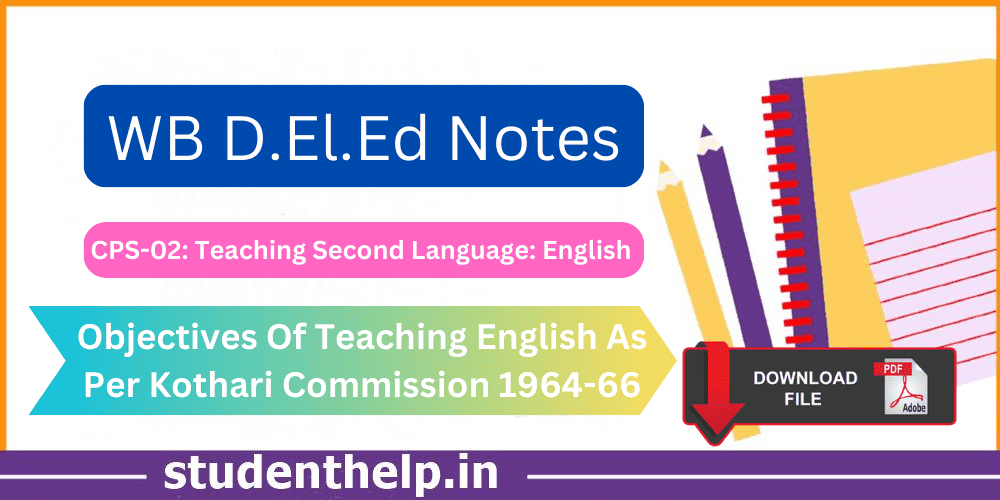The objectives of teaching English at the elementary level according to Kothari Commission are as below.
- To enable learners to understand simple situational English when spoken to.
- To enable learners to speak words, phrases, sentences etc. for communication and interaction in an alien situation.
- It enables learners to read letters, simple words, phrases and sentences in contents and transfer information from that to other forms.
- To enable learner to write plain and simple letters, words, phrases and sentences to communicate ideas, thoughts etc.
- To enables learners to understand the simple word-order and functions of the target language i.e. English. .
- To familiarise learners with the basic process of writing.
There are different views on the question at what level of schooling, the study of English, should be introduced. Some would argue that the child should, first of all, be required to study his or her mother tongue only when he or she just enters school. He should continue with the study of mother tongue for four or five years. There after English should be introduced. But the psychologists give another view their views point is that the child at lower age levels can pick up more languages without any difficulty. When the students go to the middle school at the age of ten or eleven, they should begin the study of English. These relatively advanced students have achieved mastery over the structures of his L₁ and he can profitably use it in acquiring a second language. The Ashoke Mitra Commission suggested that English should begin from Class-V (10 years). Again in 1998, the Pabitra Sarkar Commission recommended to introduce English from Class-III, or to be more correct, from the second half of Class-II by just developing the learner’s listening skill. At present on public demand, the entry point of learning English in Class-I (6 years).








